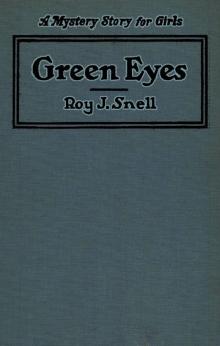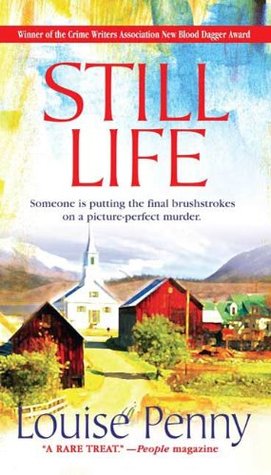Portrait of a Spy


Author: Daniel Silva
Category: Mystery
Published: 2011
Series:
View: 502
Read OnlineAmazon.com Review Amazon Exclusive: Daniel Silva on Writing _ Portrait of a Spy_ with a Pencil While on book tour, I’ve been surprised to find that readers are fascinated by how writers actually write. Most readers hold in their mind an idealized image of the novelist at work—a figure in a trendy urban coffeehouse, a solitary figure walking along an empty beach. The truth, however, is seldom so romantic.Before going any further, let us stipulate that, much like the hero of my novels, the art restorer and spy Gabriel Allon, I am something of a creature of habit. I work seven days a week, from early in the morning until six thirty in the evening, when I stop to watch the evening news. My work clothing never varies: gray sweatpants by Russell Athletic, a long-sleeve T-shirt by L.L. Bean, fleece Acorn moccasins, and discount cotton socks from Marks & Spencer in England. Occasionally, visitors to our house will catch a glimpse of this outfit, but, for the most part, my wife and children tend to shield me from public view. As a rule, I don’t answer the telephone—unless it is a family emergency of some sort—and I don’t read e-mail. I nibble rather than eat. Portrait of a Spy, like all the Gabriel Allon novels, was fueled largely by McVitie’s digestive biscuits.I have a computer, of course, but I really do most of my actual writing in longhand, on yellow legal pads. I prefer to work while lying on the floor rather than at my desk. This annoys my wife because she took a great deal of time and effort to have a desk custom made to fit my office. When I showed her a photograph of Muriel Spark, one of her literary heroes, writing in longhand stretched across a floor, she was only partially mollified. Sometimes we talk about living somewhere other than Georgetown. Secretly, the very idea terrifies me. After writing 14 books in the same room of the same house, I am afraid I have lost the ability to work anywhere else.As for my writing instrument of choice, it is unquestionably the pencil. There is something about the sound it makes scratching across the page that, for me, is the essence of composition. The pencil is the antithesis of all things cyber and e, a means of returning, however briefly, to a world that is unconnected and unwired. A pad and pencil do not freeze or crash. There are no viruses or error messages. If a thunderstorm knocks out the power, the words will still be there when the lights come on again. And then, there is the satisfying natural rhythm of the work itself—the turning of the completed page, the sharpening of the dulled point, the fortnightly disposal of the fluffy wooden shavings.Lately, I have been hoarding pencils. I’m not sure precisely when it began; I suspect it had something to do with the death of the typewriter. An irrational fear gripped me, a fear that pencils were next. If the typewriter could go extinct, how could the lowly, environmentally hostile pencil possibly hope to survive in the brave new world? I now order my favorite brand—the Paper Mate Mirado Black Warrior No. 2—by the case. I am reasonably confident I now have enough pencils on hand to see me through the next several novels—though, if I happen to misplace a pencil, I will search the house thoroughly before removing a new one from its special drawer and sharpening it for the first time. To sharpen a virgin pencil is, in a sense, to commit an act of assisted suicide. It saddens me.I wish it were not so. I wish I could write on a computer while traveling on an airplane or sitting in a strange hotel room, but I cannot. I have become a prisoner of my office. I need my floor, and my Mirado Black Warrior No. 2 pencils, and my McVitie’s digestive biscuits. I hoard them, too. I keep them on a special shelf in the storage room, next to my socks from Marks & Spencer.Copyright © Daniel Silva 2011. All Rights Reserved.Product DescriptionGabriel Allon has been hailed as the most compelling creation since “Ian Fleming put down his martini and invented James Bond” (_Rocky Mountain News_). A man with a deep appreciation for all that is beautiful, Gabriel is also an angel of vengeance, an international operative who will stop at nothing to see justice done. Sometimes he must journey far in search of evil. And sometimes evil comes to him. In a dangerous world, one extraordinary woman can mean the difference between life and death. . . .For Gabriel and his wife, Chiara, it was supposed to be the start of a pleasant weekend in London—a visit to a gallery in St. James’s to authenticate a newly discovered painting by Titian, followed by a quiet lunch. But a pair of deadly bombings in Paris and Copenhagen has already marred this autumn day. And while walking toward Covent Garden, Gabriel notices a man he believes is about to carry out a third attack. Before Gabriel can draw his weapon, he is knocked to the pavement and can only watch as the nightmare unfolds. Haunted by his failure to stop the massacre of innocents, Gabriel returns to his isolated cottage on the cliffs of Cornwall, until a summons brings him to Washington and he is drawn into a confrontation with the new face of global terror. At the center of the threat is an American-born cleric in Yemen to whom Allah has granted “a beautiful and seductive tongue.” A gifted deceiver, who was once a paid CIA asset, the mastermind is plotting a new wave of attacks. Gabriel and his team devise a daring plan to destroy the network of death from the inside, a gambit fraught with risk, both personal and professional. To succeed, Gabriel must reach into his violent past. A woman waits there—a reclusive heiress and art collector who can traverse the murky divide between Islam and the West. She is the daughter of an old enemy, a woman joined to Gabriel by a trail of blood. . . . Set against the disparate worlds of art and intelligence, Portrait of a Spy moves swiftly from the corridors of power in Washington to the glamorous auction houses of New York and London to the unforgiving landscape of the Saudi desert. Featuring a climax that will leave readers haunted long after they turn the final page, this deeply entertaining story is also a breathtaking portrait of courage in the face of unspeakable evil—and Daniel Silva’s most extraordinary novel to date.
 Green Eyes
Green Eyes God Game
God Game The Peridale Cafe Cozy Box Set 4
The Peridale Cafe Cozy Box Set 4 Second Life
Second Life Still Life
Still Life The Last Bodyguard
The Last Bodyguard Riptide
Riptide Bridged
Bridged